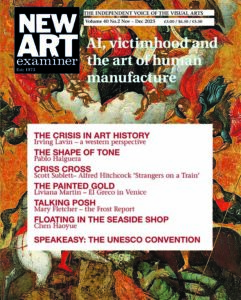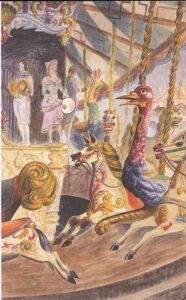Rina Oh Amen
Known as the grandfather of the Pop Art Movement, Larry Rivers was a prolific, outrageous and significant artist of the 20th century. The virtuoso creative was a film maker, painter, sculptor, saxophonist and pianist, a natural provocateur who was hungry for attention and oftentimes stunned the art world with his outrageous behavior. In contrast to his public persona, Rivers spent most of his time as an introvert in his creative process often working alone in his art studio, while at other times the studio was buzzing with a crowd of models, other artists and visitors such as Louis Meisel, executive producer of the film.
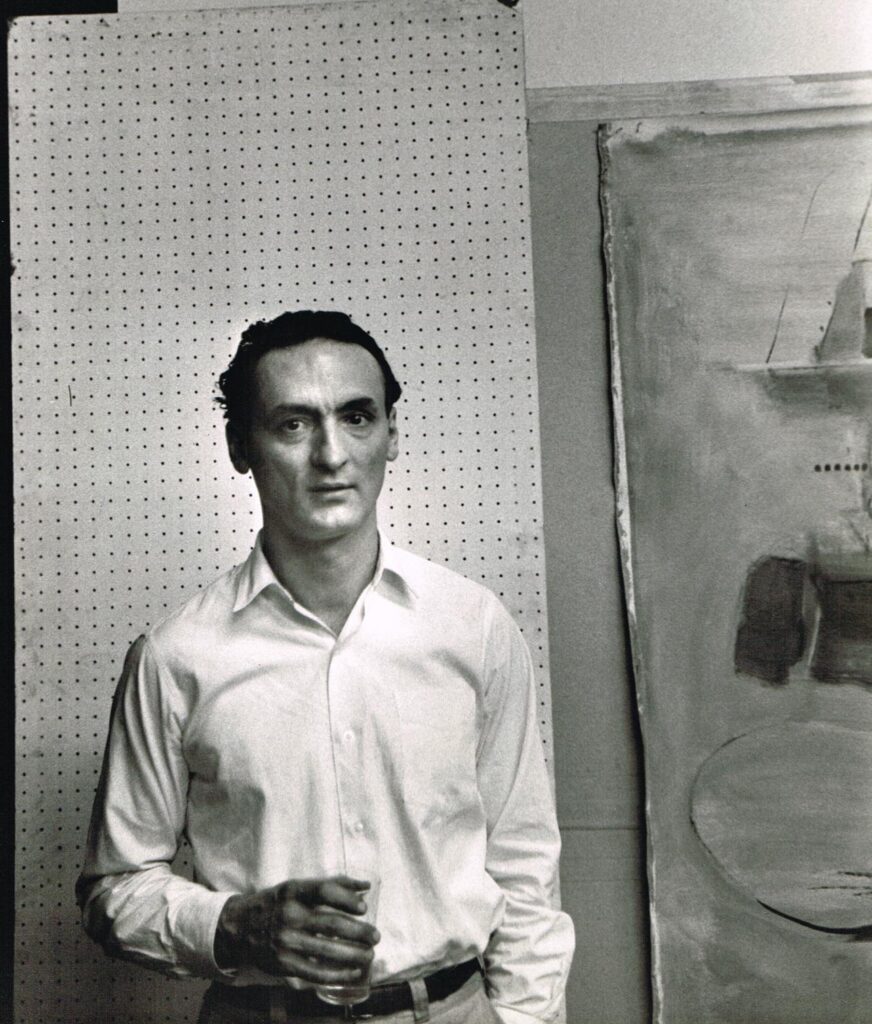
Larry Rivers was born Yitzroch Loiza Grossberg on August 17, 1923 and passed away on August 14, 2002. He earned a B.A. in education from New York University in 1951, changing his name to Rivers in 1940 at the start of his career as a jazz saxophonist. Bad Boy of the Art World, the film directed by Peter Rosen, opens with a black and white scene of Larry Rivers and Lisa Minnelli. Many voices found him outrageous. Larry mocked women, while adoring them, and caused a spectacle wherever he went. He was not constrained.
Meisel recalls meeting Rivers for the first time after making his first purchase of the artist’s work. He acquired two drawings from a sketchy gallery and wanted Rivers to authenticate them, beginning his decades long relationship with Rivers. Meisel went on to say during a panel discussion in Sag Harbor following the premiere: “I felt very strongly that he, Johns, and Rauschenberg were the ones moving back into imagery from abstract painting. I spent a lot of time with them. I was a bit late in the pop art movement because my friends, the abstract expressionists, didn’t like the pop artists. In the 60’s the pop artists really brought back the imagery but with a flatness of surface which was one of the rules of abstract painting.”
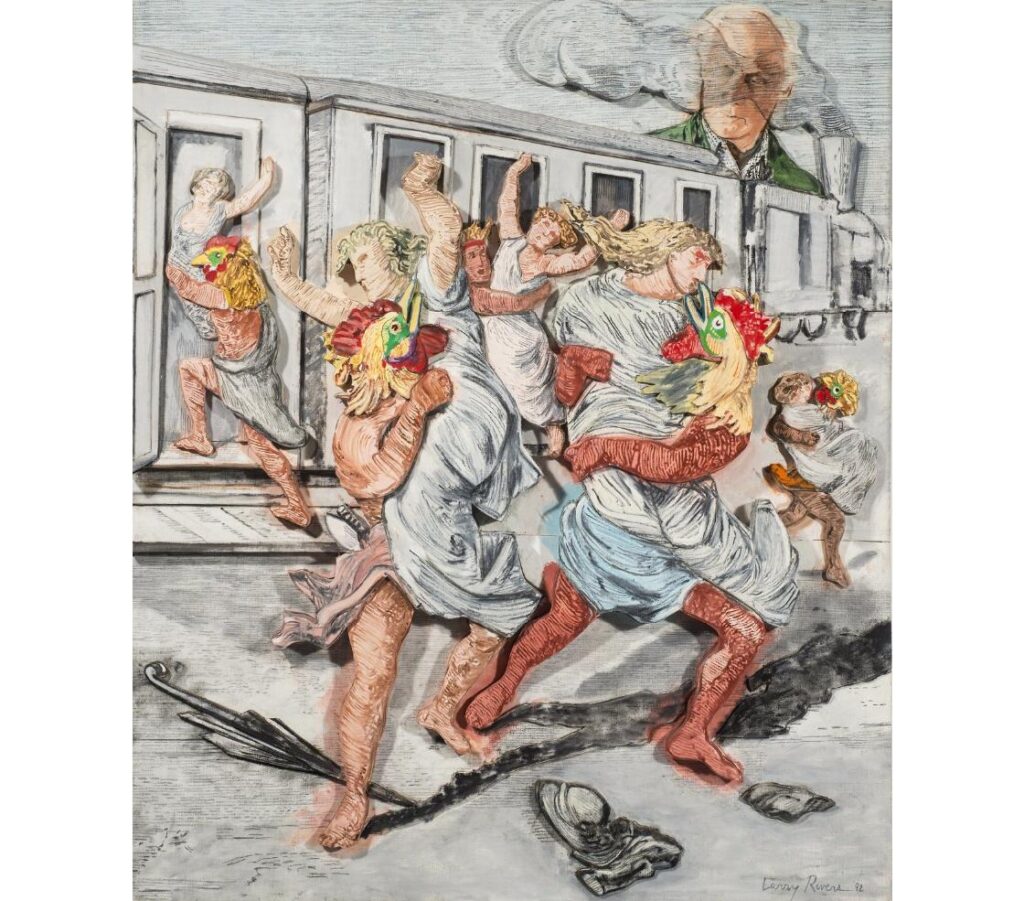
When Rivers began his career in the 1950’s making abstract expressionist paintings, he was immersed in the jazz scene playing the saxophone in Harlem every Monday night in “jam sessions”. The famous black and white photo in 1959 shot by John Cohen is featured in the film, where a young Larry Rivers sits at the table sharing a meal with fellow creatives. This was all part of his creative process, along with the films he made both outdoors and in his studio. The art world fifty years ago, is not where the art world stands today. Larry Rivers did what he wanted to do and was “very involved in the shock value of his choices”- says painter, Eric Fischl in the film.
Fischl studied Larry Rivers’ work while attending Phoenix College and earned his B.F.A. from the California Institute for the Arts in 1972. By 1982, he was amongst four artists represented by Mary Boone and his work is heavily influenced by Rivers’ realism. Fischl “found the movie incredibly depressing. Not for bad reasons, but because it was such a powerful portrait of an artist’s struggle to figure out the deeper meanings of life. And kind of not get to it which is terrifying to think about. But leave all his inquiries behind. The inquiries were so beautiful, provocative, sensitive, and insensitive simultaneously. There was so much there that I as an artist strive for and feel condemned it pursued the same sense. Defining meaning either through breaking boundaries or reaffirming them. Never getting the sense of confidence that it was the right way to go”.
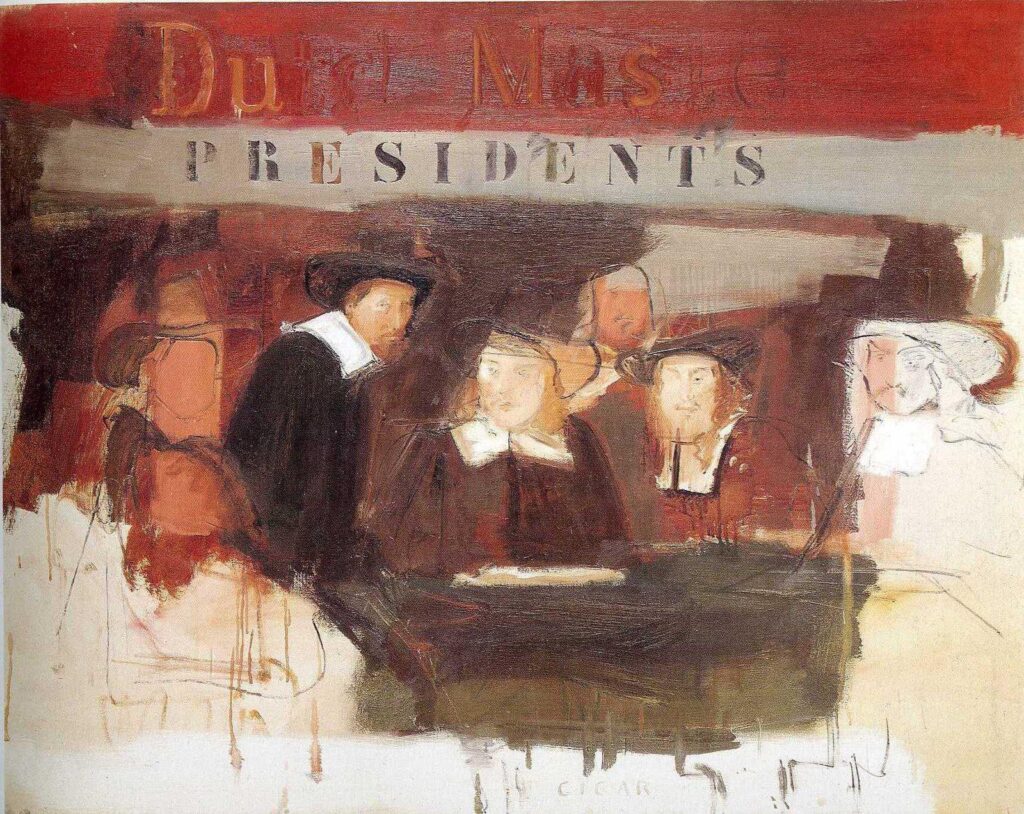
Art dealer Ethan Cohen says: “We are pleased to support an important artist’s legacy. He is one of the important artists of the 1960’s, 70’s and 1980’s of the American Art scene. This new documentary and interest in his art practice will give needed attention to an under-recognized artist and place him next to Rauschenberg, Johns, Warhol helping us better understand the period of art making in which he lived.”
His earlier work is widely depicted and given more attention in the film. Curators and artists were interviewed whom all acknowledged his talent and gave commentaries about the person vs the art and the artist. As the person evolved, the art evolved. Rivers’ sensationalist tactics are delivered while at the same time, his significance and mark in 20th century abstract expressionism and the pop art movement are given credit- although Rivers never truly fell into either movement. His greatest contribution was bringing back realism during the time the art world focused mainly on abstract expressionism as Meisel, Eric Fischl, and David Joel, President the Larry Rivers Foundation, expressed during the Sag Harbor panel discussion.
Barbara Goldsmith, who is featured in the film is an art journalist who describes the “painterly quality” of his works. She says Rivers “combines the best of the abstract look with realism”. By mid 1950’s most artists were producing abstract expressionist works while Rivers stayed behind the times, simultaneously living ahead of his time. In this format, Rivers’ work was never confined in one category.
The art world has recently begun to pay closer attention to the works produced by Larry Rivers. Narration of the film are delivered though several voices. I heard Rivers, through his extravagant persona describing what inspires him to create. It is prolific in contrast to the attention seeking and insecure person- separated into halves as the true self (the artist) and in contrast to his alter ego (the public persona). In order to truly acknowledge and appreciate River’s work as artist, the public must disassociate the controversial life he lived.
I was taken back into a different time, fifty years ago when the contemporary art world was still emerging as a major market, distinguishing itself and separating from the institutional and non-living artists’ work previously admired by art patrons.
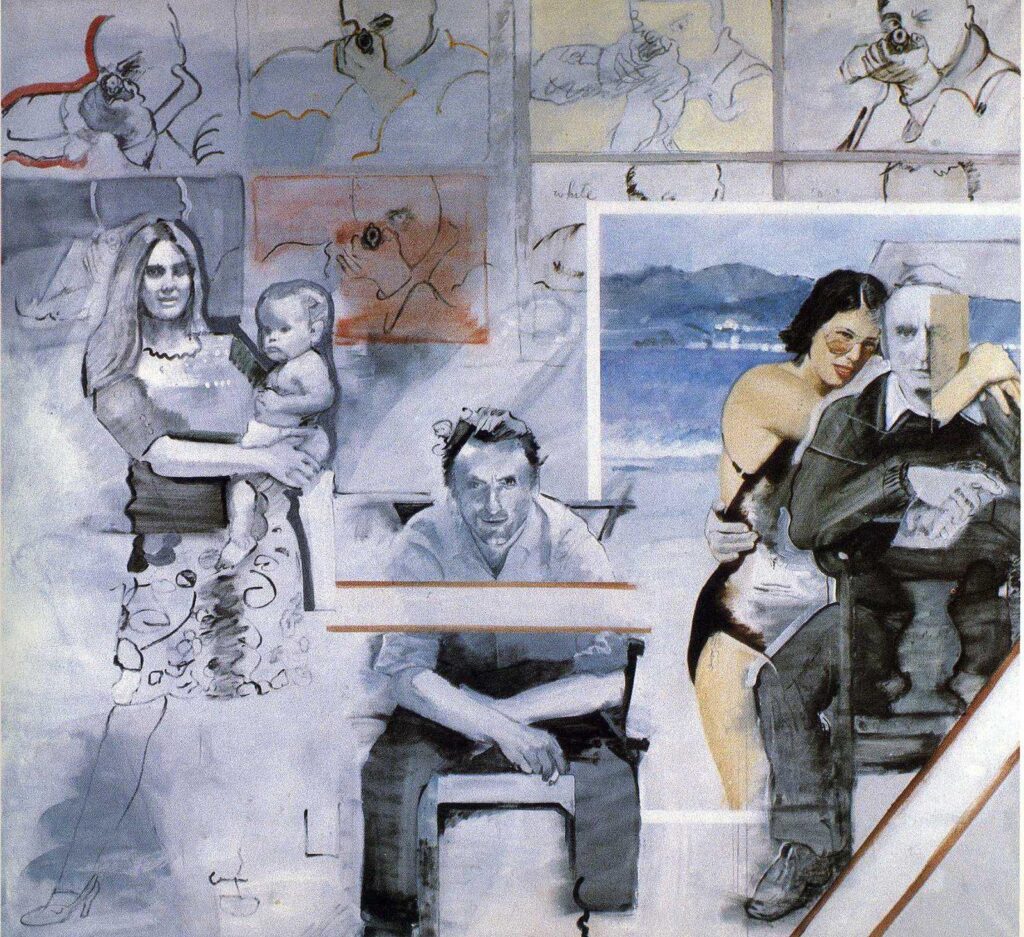
Rosen, producer and director once told me the art world post the Nixon administration has dwindled in excitement, and today it is nothing compared to how it was. “We have not had a significant movement past that time frame in American art”. According to Rosen, he began his journey making the Larry Rivers film 15 years ago. The film was originally scheduled to premiere five years ago and had a delay.
The female narrative is significant in this film. These female peers included painter Jane Freilicher, who appears in black and white footage from the Rivers’ archives giving her thoughts in an interview during the later years as one of the narrators. Other female voices include painter Cornelia Foss who says the beginning of the “abstract expressionist movement was serious and earnest”.
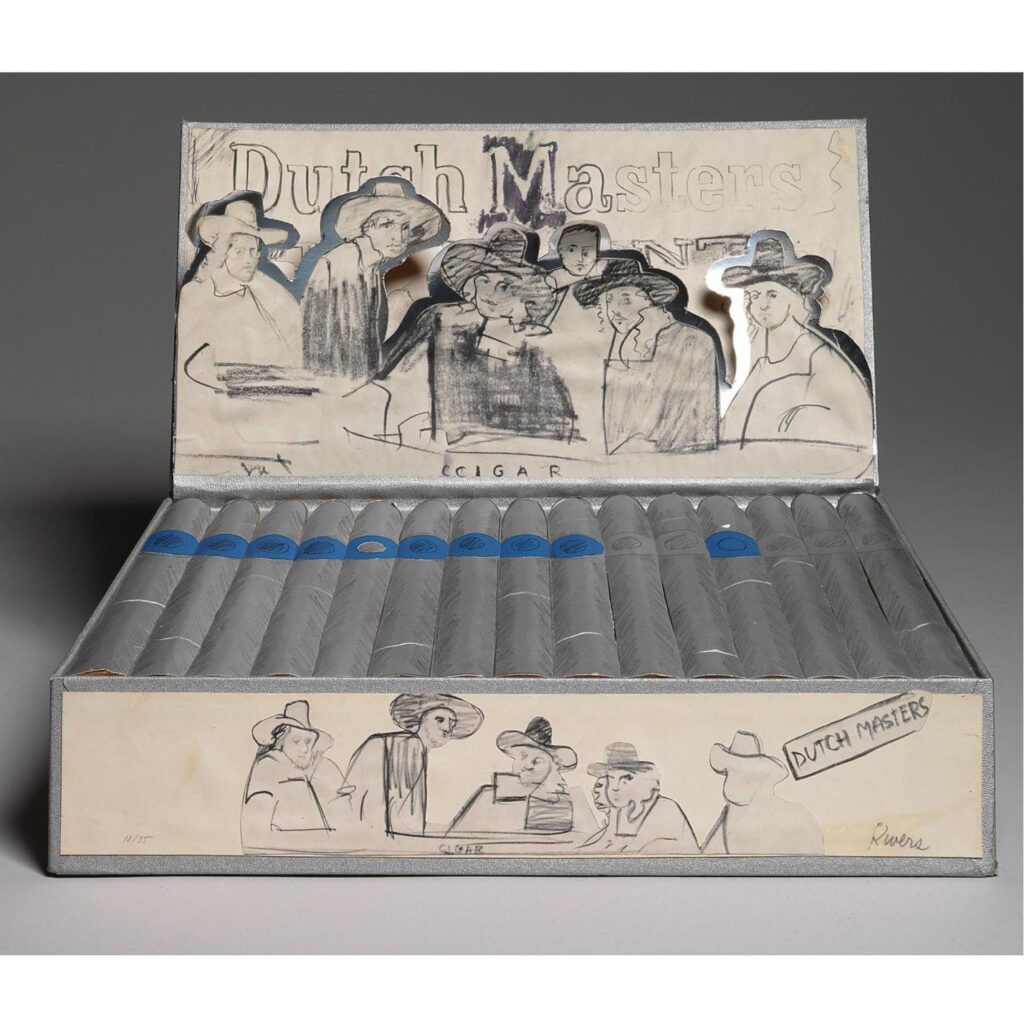
Rivers contribution to the pop art movement as the “grandfather” paved the way for Lichtenstein and Warhol who later took concepts Larry Rivers developed to the next level. Warhol spent his lifetime focusing on pop art concepts and today his work falls into one category whereas Rivers dabbled in many yet never constrained himself into one. It goes hand in hand with the persona of the work, and the artist who creates it. His inspiration stemmed from several works both old and new, including work by Braque and De Kooning.
The film gives a glimpse into a world of how it used to be for women during the early days as feminism emerged. Today, women are still battling for equality. Larry Rivers was one of America’s greatest artists of the 20th century, best known as a pioneer of abstract expressionism and grandfather of the Pop art movement whose work does not fit into a singular category of American Art history. He “dabbled” in several art movements, experimenting yet never fully immersing himself or perhaps tying his work into one category. It is hard to pin down where Larry Rivers work fits but wherever that may be, he was a major contributor to American Art and is finally getting acknowledgement for his contributions.
GATHR.COM
Larry Rivers: Bad Boy of the Art World – Video On Demand – Gathr
<https://gathr.com/vod/a9d0c337/larry-rivers-bad-boy-of-the-art-world>
Larry Rivers: Bad Boy of the Art World – Video On Demand – Gathr
IS IT ART OR IS IT PORN? Controversial and provocative artist Larry Rivers
( 1923-2002 ) was recently the sub…
<https://gathr.com/vod/a9d0c337/larry-rivers-bad-boy-of-the-art-world>
https://gathr.com/vod/a9d0c337/larry-rivers-bad-boy-of-the-art-world
On Vimeo:
BAD BOY OF THE ART WORLD MP4 <https://vimeo.com/911839678>
BAD BOY OF THE ART WORLD MP4
Mixed tracks, not color corrected.
<https://vimeo.com/911839678>
